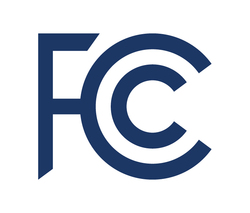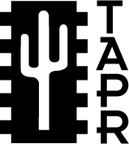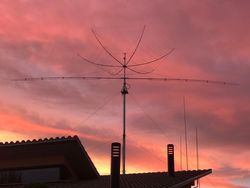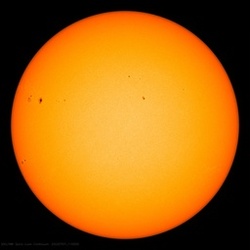 July 7, 2022 John E. Ross, KD8IDJ, Editor
| ||||||
FCC Legacy CORES System to be Retired
In essence, CORES is designed to identify those who hold certain types of FCC licenses and FCC authorizations, including amateur licenses, and organize them in an easily accessible manner under a common FCC Registration Number (FRN) regardless of whether one holds a single such authority or thousands. The new CORES, in addition to assigning individual FRNs, allows holders of multiple FRNs to aggregate them under a single account where the licenses and authorization, fees and payments, and related actions can be administered from within the same account. In effect, new CORES can be conceptualized as an electronic interactive file folder. The updated version of CORES has been available since 2016, and now its use will be mandatory for all amateur licensees when submitting amateur-related applications. Starting on July 15, 2022, the Legacy CORES website will re-direct users to the Commission's updated CORES site. Although some functionalities in the old system will continue to work for a short time, the FCC has urged all users to transition to the updated CORES system to take advantage of its enhanced security and functionality. Register with the FCC Licensees that do not already have an FCC CORES Username Account must create one with a unique username (a valid email address) and password. After creating the account, when logged in, users should associate their existing FRN or FRNs with this account. Instructions for doing so are on the FCC Registration Help page. One's FRN is printed on all current amateur applications and licenses, and will not change. FRNs can also be found by looking up one's call sign in the Commission's ULS (https://wireless2.fcc.gov/UlsApp/UlsSearch/searchLicense.jsp) or by using the FCC's advanced search page. The FCC has posted Tutorial Videos to assist with the transition. ARRL VEC Manager Maria Somma, AB1FM, recommends viewing the videos "Getting Started With the New CORES," which explains how to register for a CORES Username Account, and "Associating an FRN to a Username," which instructs Legacy CORES users on how to link one or more existing FRNs to a username. FCC CORES Registration Instructions can also be found on the ARRL website. Additional information is available on the FCC website or by calling the FCC Licensing Support Center at (877) 480-3201, Option 4, and on the FCC's e-support page. Hawaii Hurricane Emergency Communications Drill Set for July 16, 2022
In addition to testing two-way radio communications, the drill will also use Winlink Global Radio Email® to send and receive messages from surrounding islands and participating agencies. Radio operators will first use radio, then they'll send simulated digital messages using Winlink for reports and requests for assistance. Hawaii ARES Public Information Officer Michael Miller, KH6ML, said, "With this drill, we are also trying to increase the level of participation, so that all operators have the chance to develop the skill sets for real-world situations." Miller added, "It is important for younger, or new, amateur radio operators to know they can use their digital skills in emergency situations." Miller also said they will be sending after-action reports to participating agencies, such as the National Weather Service and the American Red Cross, to help improve communications using amateur radio technology. This is the second statewide drill conducted by Hawaii ARES in 2022. Makani 'Ino begins Saturday, July 16, 2022, from 9 AM to noon Hawaii Standard Time. ARRL Foundation Announces 2022 Scholarship Awards
Applications for 2023 ARRL Foundation Scholarships are expected to open on October 1, 2022. More information about the ARRL Foundation Scholarship Program is available at www.arrl.org/scholarship-program. The ARRL Foundation administers programs to support the amateur radio community, and was established in 1973 by ARRL The National Association for Amateur Radio®. The full list of scholarship awards and recipients can be found in the complete story on ARRL News. ARRL and TAPR Digital Communications Conference Returns in September 2022
The DCC is for everyone, beginners and experts alike, with an interest in all forms of digital communication. The official call for technical papers has been issued and general topic areas include, but are not limited to:
Authors can submit their papers for this year's conference, by email, to ARRL Production Coordinator Maty Weinberg, KB1EIB, at mweinberg@arrl.org. The deadline is September 1, 2022. The conference papers will be published exactly as submitted. The authors will retain all rights and do not need to be present at the conference, and all papers will be distributed to DCC attendees. Printed copies will be available for sale at Lulu www.lulu.com. More information about TAPR - Tomorrow's Ham Radio Technology Today can be found that their website. Amateur Radio in the News ARRL Public Information Officers, Coordinators, and many other member-volunteers help keep amateur radio and ARRL in the news. "Local amateur radio operators participate in the 2022 International Amateur Radio Field Day" / Bladen Journal (North Carolina), July 7, 2022 -- The Bladen Amateur Radio Society is an ARRL Affiliated Club. Share any amateur radio media hits you spot with us.
ARRL Podcasts Schedule
The latest episode of the ARRL On the Air podcast (Episode 30) features a discussion with ARRL Contest Manager Paul Bourque, N1SFE, about ARRL Field Day and off-the-grid operating.
The latest edition of the ARRL Eclectic Tech podcast (Episode 63) features a discussion with solar researcher and ARRL Central Division Director Carl Luetzelschwab, K9LA, about the 1859 super flare, known as the Carrington Event. Could it happen again during the peak of the current solar cycle? Announcements
Get on the air for this weekend's IARU HF World Championship. Have fun searching for IARU member society headquarters stations on the 160-, 80-, 40-, 20-, 15- and 10-meter bands. The contest begins at 1200 UTC (8 AM ET, 5 AM PT) on Saturday, July 9, and ends at 1159 UTC (7:59 AM ET, 4:59 AM PT) on Sunday, July 10. Check out the rules and set a goal now. IARU President Tim Ellam, VE6SH, will operate from contest station VE7UF as VE6SH/7. Look also for Vice President Ole Garpestad, LA2RR, and Secretary Joel Harrison, W5ZN, operating from their home stations. See rules. Ducks on the Air, the University of Oregon's amateur radio club, will operate a commemorative station to celebrate the 2022 World Athletics Championships.  The men's and women's track and field competition will be held on July 15 - 24 at Hayward Field on the University of Oregon campus and features athletes from around the world. The event has been held for 18 years, except for 2021, when it was postponed due to COVID. This is the first time the World Athletics Championships have ever been held on American soil and more than 200,000 spectators are expected to attend. The Ducks on the Air Radio Club, using their callsign, N7DUX, will be staffed by amateur radio operators from the state of Oregon using all band and all modes. Organizers hope to make thousands of QSOs during the 10-day run. The club is also celebrating 100 years of amateur radio at the University of Oregon. The men's and women's track and field competition will be held on July 15 - 24 at Hayward Field on the University of Oregon campus and features athletes from around the world. The event has been held for 18 years, except for 2021, when it was postponed due to COVID. This is the first time the World Athletics Championships have ever been held on American soil and more than 200,000 spectators are expected to attend. The Ducks on the Air Radio Club, using their callsign, N7DUX, will be staffed by amateur radio operators from the state of Oregon using all band and all modes. Organizers hope to make thousands of QSOs during the 10-day run. The club is also celebrating 100 years of amateur radio at the University of Oregon.In Brief... The ARRL DX Advisory Committee (DXAC) recently appointed John Sweeney, K9EL, as the new Central Division representative. Sweeney replaces Jim O'Connell, W9WU, who served for over 20 years on the Committee. The committee also appointed Central Division Director Carl Luetzelschwab, K9LA, to Board Liaison, who replaces Delta Division Director David Norris, K5UZ. The ARRL DXAC addresses and advises the ARRL Board on issues concerning the DXCC program, amateur radio's premier award that hams can earn by confirming on-the-air contacts with a minimum of 100 countries. The DXAC is composed of a representative from each ARRL Division, a representative from Radio Amateurs of Canada, an ARRL Board Liaison, a Staff Liaison, and an Administrative Liaison. To learn more about the DXAC and representatives in each Division, visit http://www.arrl.org/dx-advisory-committee and click the Contact Us button. The K7RA Solar Update Tad Cook, K7RA, of Seattle, Washington, reports for this week's ARRL Propagation Bulletin ARLP027:
Sunspot activity increased this week, with average daily sunspot numbers going from 49.1 to 62.6. But oddly, average daily solar flux was down slightly from 105.3 to 103.5. Taking a longer view, solar activity is stronger than it was a year ago, when the average daily sunspot number was 34.7 and average solar flux was 86.9. Spaceweather.com reported that a Coronal Mass Ejection (CME) missed Earth on July 1, but it pushed dense solar wind plasma toward us, causing a G1-class geomagnetic storm. In the few hours past midnight UTC, planetary K index was 4, then 5. Alaska's high latitude college A index was 25 on July 2. Predicted solar flux for the next month is 120 on July 7 - 8, 130 on July 9 - 11, then 120, 125, 110, and 108 on July 12 - 15, then 110, 100, 95 and 98 on July 16 - 19, 95 on July 20 - 21, 98 on July 22 - 23, 100 on July 24 - 25, 102 on July 26, 105 on July 27 - 28, 100 on July 29, 110 on July 30 - 31, 112 on August 1 - 2, 115 on August 3 - 6, 112 on August 7 - 8, 110 on August 9, and 108 on August 10 - 11. Predicted planetary A index is 14 and 8 on July 7 - 8, 5 on July 9 - 12, 10 on July 13 - 14, then 15, 12, and 10 on July 14 - 17, 8 on July 18 - 21, then 12, 15, 10, and 8 on July 22 - 25, 5 on July 26 - 31, then 8, 25, 12, and 8 on August 1 - 4, and 5 on August 5 - 9. Sunspot numbers for June 30 through July 6, 2022, were 40, 30, 57, 42, 79, 92, and 98, with a mean of 62.6. The 10.7-centimeter flux was 95.7, 98, 100.2, 102.2, 104.4, 109.4, and 114.6, with a mean of 103.5. Estimated planetary A indices were 5, 7, 19, 8, 21, 4, and 5, with a mean of 9.8. Middle latitude A index was 5, 8, 17, 11, 18, 4, and 5, with a mean of 9.7. Send your tips, questions, or comments to k7ra@arrl.net. A comprehensive K7RA Solar Update is posted Fridays on the ARRL website. For more information concerning radio propagation, visit the ARRL Technical Information Service, read "What the Numbers Mean...," and check out the Propagation Page of Carl Luetzelschwab, K9LA. A propagation bulletin archive is available. For customizable propagation charts, visit the VOACAP Online for Ham Radio website. Share your reports and observations. A weekly, full report is posted on ARRL News. Just Ahead in Radiosport
Visit the ARRL Contest Calendar for more events and information. Upcoming Section, State, and Division Conventions
Search the ARRL Hamfest and Convention Database to find events in your area. Have News for ARRL? Submissions for the ARRL Letter and ARRL News can be sent to news@arrl.org. -- John E. Ross, KD8IDJ, ARRL News Editor
ARRL -- Your One-Stop Resource for
Subscribe to...
Free of charge to ARRL members...
| ||||||
 The Federal Communications Commission (FCC) will retire the
The Federal Communications Commission (FCC) will retire the .jpg) Makani 'Ino is Hawaiian for "big wind" and the name of Hawaii's Amateur Radio Emergency Service® (ARES®) upcoming hurricane emergency communications drill. The drill will assess the ability of amateur radio operators to establish emergency radio communications in the event of a severe infrastructure failure due to hurricane-like conditions.
Makani 'Ino is Hawaiian for "big wind" and the name of Hawaii's Amateur Radio Emergency Service® (ARES®) upcoming hurricane emergency communications drill. The drill will assess the ability of amateur radio operators to establish emergency radio communications in the event of a severe infrastructure failure due to hurricane-like conditions. The ARRL Foundation Board of Directors has approved the recipients of the
The ARRL Foundation Board of Directors has approved the recipients of the  The 41st ARRL and TAPR Digital Communications Conference (DCC) will be held this September 16 - 18, 2022, in Charlotte, North Carolina. Last year's conference was held virtually due to COVID-19 concerns, but this year's 3-day event will be held at the Hilton Charlotte Airport Hotel.
The 41st ARRL and TAPR Digital Communications Conference (DCC) will be held this September 16 - 18, 2022, in Charlotte, North Carolina. Last year's conference was held virtually due to COVID-19 concerns, but this year's 3-day event will be held at the Hilton Charlotte Airport Hotel..jpg)
.jpg)


-Blue.jpg)








